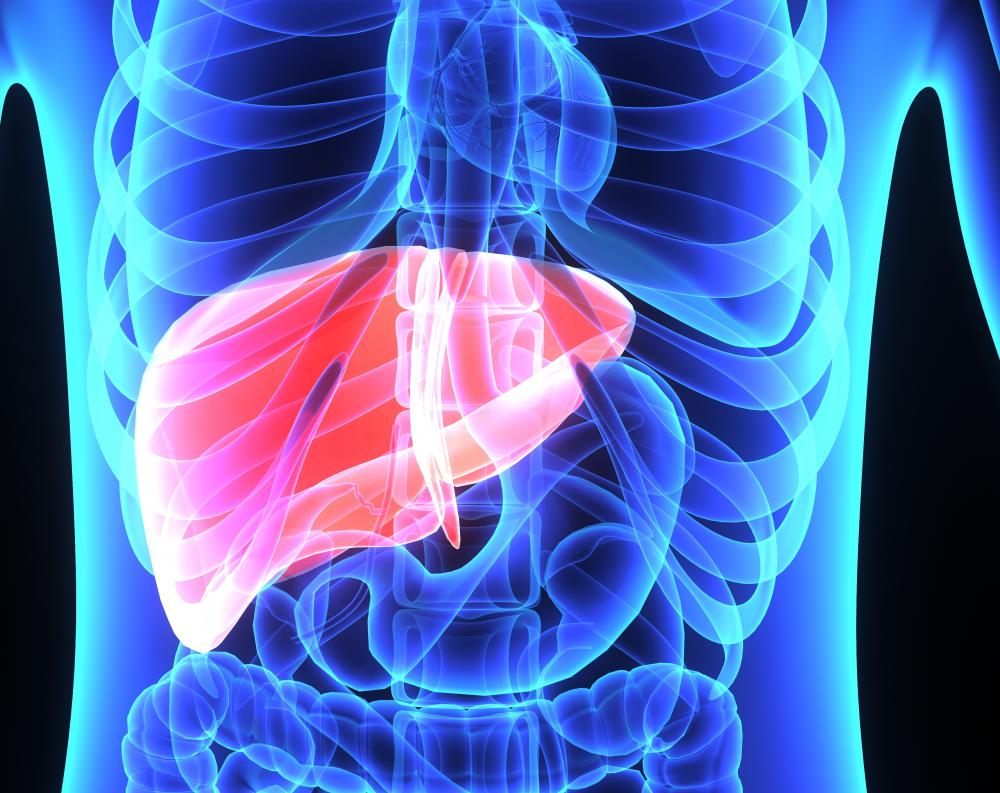At WiseGEEK, we're committed to delivering accurate, trustworthy information. Our expert-authored content is rigorously fact-checked and sourced from credible authorities. Discover how we uphold the highest standards in providing you with reliable knowledge.
What is an Estrogen Receptor?
An estrogen receptor is one of a group of hormone receptor proteins activated by the steroid hormone estrogen. These receptors are intracellular nuclear hormone receptors, meaning that they are found inside the nucleus of a cell and specialize in sensing steroid hormones. Only estrogen or a molecule with a similar structure can bind to an estrogen receptor, and the receptors themselves are only found in estrogen target cells, such as the cells of the liver, the uterus, and the breast. The main function of estrogen receptors is to act as deoxyribonucleic acid (DNA) transcription factor proteins, which are proteins that activate the transcription of messenger ribonucleic acid (mRNA). Estrogen receptors also play an important role in the process of cell proliferation and regulate the growth and breakdown of the bones.
When no estrogen is present in the nucleus of a cell, an estrogen receptor remains inactive. As soon as an estrogen hormone enter the cell's nucleus, it binds to the estrogen receptor. The receptor changes shape when the hormone is bound to it, and becomes known as an estrogen-receptor complex. Estrogen-receptor complexes then bind to sequences of DNA that are also present in the nucleus and are known as estrogen response elements. Once bound to DNA, the estrogen-receptor complexes activate nearby gene sequences, which begin transcribing mRNA, a type of molecule that provides a genetic blueprint for protein synthesis.

Guided by the mRNA, the cell begins to produce specific protein sequences. These proteins have a direct effect on the activity of the cell. For example, liver cells are directly affected by the activity of estrogen receptors. The estrogen receptor triggers the production of proteins that regulate cholesterol levels in the liver cells. In this way, estrogen receptors lower the risk of an individual contracting heart disease.

Cell proliferation, or the process of cell growth and division, is also influenced by estrogen receptors. Cells in the mammary glands are stimulated by estrogen receptors, thereby preparing the breast to begin producing milk in the event of pregnancy. The endometrium, or inner lining of the uterus, is also stimulated by estrogen receptors, which prepares the uterus for potential pregnancy.

Due to their role in cell proliferation, estrogen receptors can also increase the risk of breast cancer and uterine cancer. If cells in the breasts or uterine lining have begun to mutate due to environmental or genetic causes, the estrogen receptor can cause the mutated cells to proliferate. These mutated cells are more likely to become cancerous. Normal cells in the breasts and uterine lining that are exposed to estrogen are also more vulnerable to spontaneous DNA mutation, which can also lead to an increased cancer risk.
AS FEATURED ON:
AS FEATURED ON:















Discuss this Article
Post your comments